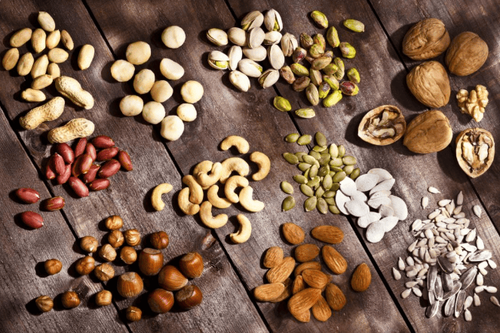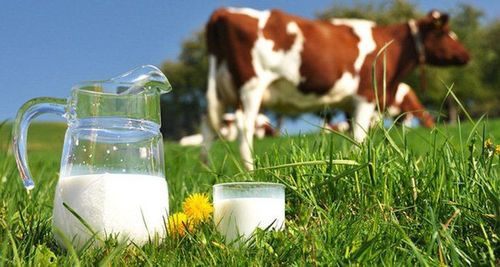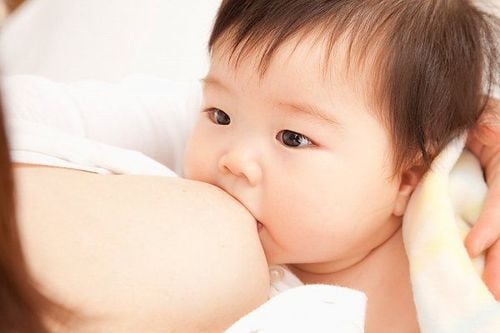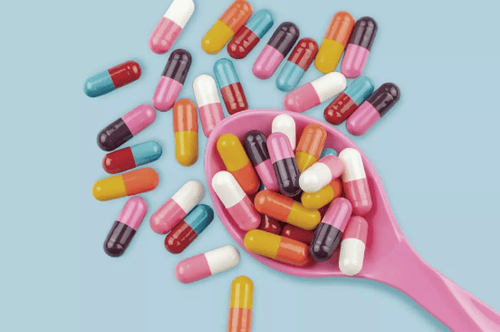This is an automatically translated article.
Weaning is an increasingly popular way to train children to use everyday foods without the support of commercially available nutritional porridge. The benefits include simplifying feeding times, controlling appetite, and making babies less fussy. However, many health care professionals highlight its downsides, such as an increased risk of choking in children.
1.What is weaning?
Weaning or weaning (BLW) was first introduced about 15 years ago and has grown in popularity ever since. Weaning is the process of introducing solid foods to a breastfed or bottle-fed infant. BLW encourages the introduction of foods through self-feeding, starting at about 6 months of age.
Instead of gradually transitioning from baby meals to regular family meals as children get older, BLW encourages parents to offer regular, small-sized foods to children from an early age .
Parents have the right to choose what foods, when to feed them, and how they are prepared to provide them to their children so that they can best feed themselves. In return, children can choose what they like to eat, quantity, portion sizes and adjust the eating rate themselves.
2.Benefits of weaning/weaning

Bé ăn dặm
2.1 Helping children develop good eating habits BLW emphasizes letting children choose what they want to eat and how much, making them an active participant in the eating process rather than being a passive recipient. Because of this, BLWs are often claimed to promote healthier eating behaviors after children reach adulthood.
In one study, babies weaned by BLW were able to perceive feelings of hunger and fullness earlier, from about 18 to 24 months of age, thereby having increased awareness and ability to actively eat. Moreover, early awareness of eating habits helps to reduce the prevalence of obesity and overweight in children.
2.2 Preventing overweight BLW can protect children from excessive weight gain. Experts believe this may be because children are involved in their own eating process from an early age.
With BLW, infants are allowed to hold foods and put them in their mouths at their own pace, with little influence from parents. Children may also have the initiative to stop eating when they feel full. Many studies show that babies who follow the BLW method are more likely to have a weight in the normal range than babies weaned using the traditional method.
One study found that about 1% of weaned children using BLW were believed to be obese compared with 11% in the non-BLW group. However, larger and more recent studies have not concluded any link between weaning method and birth weight.
2.3 Reducing Anorexia BLW is often claimed to help reduce picky eating behavior in children and promote the consumption of a wider variety of foods. In one study, children who were weaned by BLW were rated by their parents to be less fussy during feeding. In another study, children weaned by BLW tended to be less likely to like foods. sweeter.
BLW proponents often talk about convenience as the deciding factor to use this method. Parents no longer need to think about making or buying the right dishes, but simply provide the family meals in the right portions and sizes. At the same time, parents also reduce stress in feeding children when children can choose their favorite foods, thereby reducing anorexia and picky eating.
3. How to start weaning your baby

Các loại hạt thích hợp với phương pháp BLW
3.1 Some foods that work well with the BLW method: Avocados Baked potatoes without skin or sweet potatoes Bananas Beans or peas, lightly mashed Minced meat Nuts Hard-boiled eggs Lentils Oatmeal porridge Salmon Beans soft boiled greens Steamed or chopped carrots Steamed broccoli Unsweetened yogurt Parents should be aware that iron supplementation for children is very important, as this nutrient plays an essential role during growth and child development.
Good examples of foods rich in iron include meat, eggs, fish, beans and green vegetables. Cutting food into small pieces your baby can grasp on his own is also essential to support gums. of children. After preparing foods that are BLW-appropriate, parents should place a small amount in front of the child and allow the child to pick up the food with their hand or spoon and put it in their mouth.
3.2 Foods to avoid Some foods to avoid during weaning include:
Honey . Honey may contain Clostridium botulinum, which is a bacteria that can cause serious food poisoning. Uncooked eggs. Undercooked eggs are more likely to contain Salmonella, which is bacteria that can be harmful to babies. Unpasteurized dairy products. These foods may contain Listeria monogenes, bacteria that can make children sick. Dairy cows . Children should avoid consuming cow's milk before 12 months of age, because cow's milk is not as rich in nutrients as breast milk or formula, is low in iron and can reduce the absorption of iron from foods. Low fat product. Children need a significantly higher percentage of calories from fat than adults. Therefore, low-fat products are not suitable. Sugary, salty, or canned foods. These foods are often low in nutrients. What's more, an infant's kidneys can have trouble processing too much salt, and sugar can damage their teeth. In addition, when using the BLW method, parents should avoid providing hard foods that children cannot crush with their gums, as well as foods with natural shapes that can cause airway obstruction for children. Examples:
Certain raw foods: raw apples, raw carrots, celery, broccoli stalks Round or coin shaped foods: whole grapes, cherry tomatoes, sausages, hard candies hard or crumbly: popcorn, hard biscuits, nuts Sticky foods: hazelnut butter, marshmallows

Nên tránh cho trẻ uống sữa bò trước 12 tháng tuổi
4.Notes when weaning children
Signs that your baby is ready to wean include the absence of tongue thrust (a baby's natural reflex of pushing food out with the tongue), the child's ability to grasp foods with simultaneous control putting them in the mouth. This stage usually appears around 6 months of age but varies from child to child.
Some children are able to sit up on their own without support and show interest in foods when their parents eat them. The consultation with a pediatrician is also something that parents should consider before weaning their children.
Choking is one of the safety concerns that is often particularly noted by medical professionals when discussing BLW. However, the study showed no difference in choking rates between children weaned by conventional and BLW methods.
Parents can take the following steps to reduce the risk of choking when weaning:
Ensure that the child is sitting upright when eating, ideally 90 degrees while facing the parent Never let a child eat a Allow children to bring food to their mouths so they can control how much food is in their mouths and how fast they eat Ensure that food can be easily crushed between fingers or when pressed between lips. Cut foods into long shapes that babies can easily hold and pick up Avoid offering foods that are round or coin-like, are too sticky, or could break easily in your baby's mouth Latest research Encourage parents to introduce children to foods with high sensitivities to increase awareness of children's reactions to foods. Delaying use of these products may increase the risk of food allergies in adulthood. Common allergens include milk, eggs, peanuts, fish, seafood, soy, wheat, sesame, and tree nuts, such as cashews, almonds, pecans, and walnuts. Parents should let children try these foods in small amounts and every other day.
As a key area of Vinmec Health System, Pediatrics Department is well-invested in personnel, technology, and equipment, bringing satisfaction to customers.
Top team of pediatric experts: Experienced professors, associate professors, doctors, and masters, who have worked at major hospitals across the country, are well-trained at home and abroad; understand child psychology. Comprehensive services: Vinmec provides a series of continuous medical examination and treatment services from Newborn to Pediatric and Vaccine,... according to international standards to help parents take care of their baby's health from birth to adulthood. Advanced techniques: Vinmec has successfully deployed many specialized techniques to make the treatment of difficult diseases in Pediatrics more effective: neurosurgery - skull surgery, hematopoietic stem cell transplantation in cancer treatment ,.... Professional care: Understanding children's psychology, building a play space for children, helping them feel comfortable and familiar with the hospital's environment, cooperating in treatment, improving effectiveness of medical treatment. To register for examination and treatment with pediatricians at Vinmec International General Hospitals nationwide, please click the "Contact" button on the website or register online.
Please dial HOTLINE for more information or register for an appointment HERE. Download MyVinmec app to make appointments faster and to manage your bookings easily.
Reference article: Healthline.comSEE MORE
Signs that a baby is "ready" to wean When should a baby be weaned? What is self-directed weaning?













